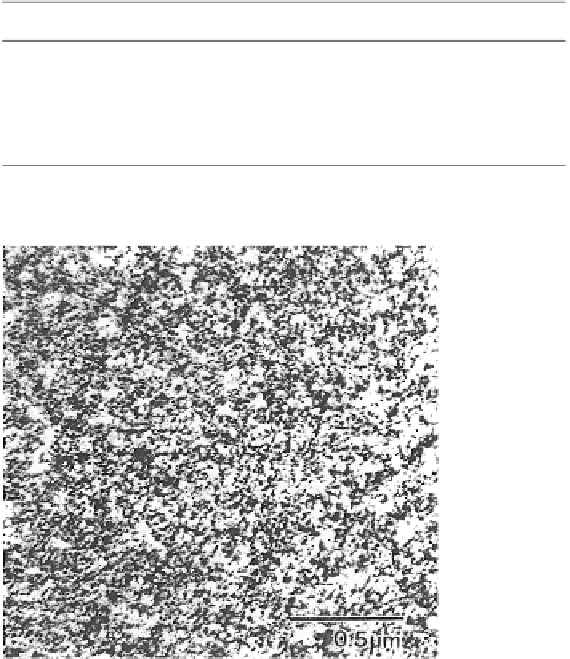Environmental Engineering Reference
In-Depth Information
Table 4.4
Radiation damage: <a> loops in Zircaloy
Nature
Vacancy(+), interstitial
Size
8-20 nm (80-100 )
Density
8
×
10
14
m
−2
Saturation fl uence
1
×
10
25
n/m
2
(
E
>1 MeV)
Thermal stability
To about 400
°
C (673K)
Effect
Strength, ductility, dimensional stability
Source: A.N.T. International (2011).
4.7
<a> type dislocation loops in neutron irradiated Zircaloy-2 (after
post-irradiation annealing at 723K for 1 h). (Source: Adamson, 2000.)
These <a> loops form early in the irradiation and the number density
reaches a saturation value at a fuel burnup below 5 GWd/MT (1 × 10
21
n/
cm
2
,
E
> 1 MeV). The size of the loops increases with irradiation temper-
ature, and the loops become unstable (start to disappear) at about 673K
(400˚C). As will be discussed later they have a strong effect on mechanical
properties and dimensional stability.
The <c> type of loop lies on the basal plane and has its Burgers vector, or
at least a strong component of it, in the c-direction of the HCP cell. As indi-
cated in Table 4.5, and unlike the <a> loop, it is strictly a vacancy-type loop,
is relatively large (100 nm) and does not form until considerable irradiation
effects have occurred. In Zircaloy, <c> loops are fi rst observed by TEM at
a burnup of around 15 GWd/MT (~3 × 10
25
n/m
2
,
E
> 1 MeV) and increase
in density for the remainder of the fuel lifetime. They are thermally stable

Search WWH ::

Custom Search